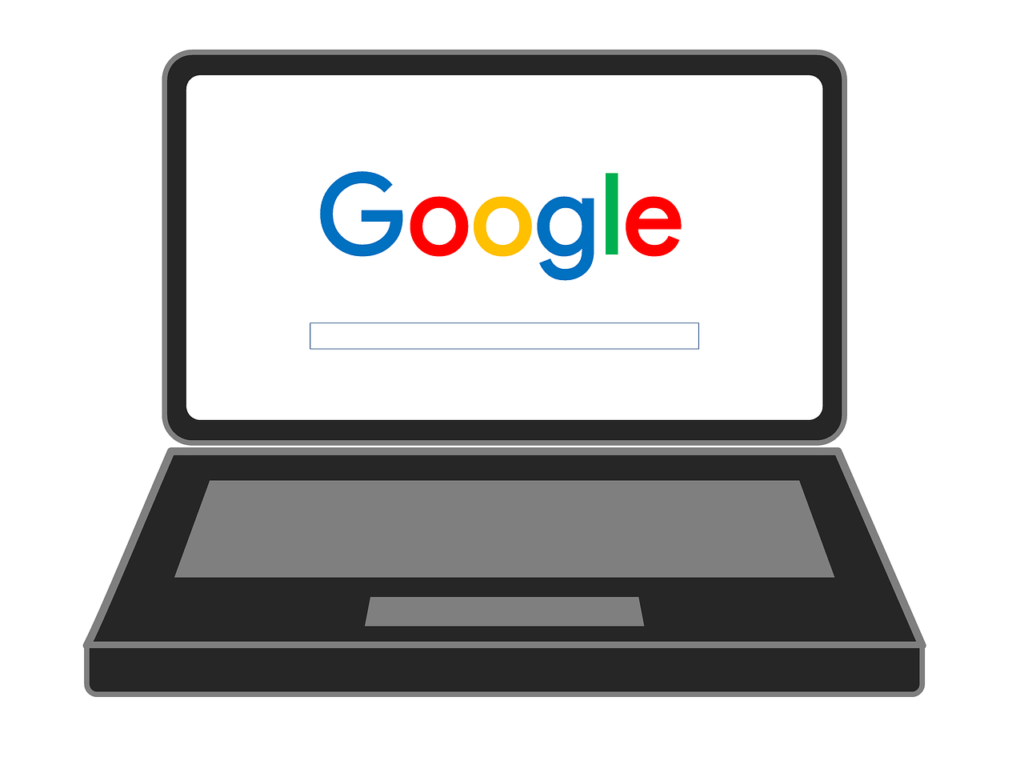This Article has been revised, edited and added to, by Poulomi Chakraborty.
- The Basics of Meta Tags
- Comparing Open Graph Tags and Twitter Cards
- Best Practices for Implementing Social Media Meta Tags in Healthcare SEO
- Advanced Strategies for Leveraging Social Media Meta Tags in Healthcare SEO
- Integrating Structured Data with Meta Tags
- Customizing Meta Tags for Different Social Media Platforms
- Utilizing Advanced Open Graph Tags
- Enhancing User Engagement with Rich Media
- Implementing Testing and Optimization
- Leveraging User-Generated Content
- Coordinating Meta Tags with Content Strategy
- Keeping Up with Platform Changes
- Practical Tips for Ongoing Optimization and Monitoring of Social Media Meta Tags for Healthcare SEO
- Additional Sections for Social Media Meta Tags in Healthcare SEO
- Conclusion
In today’s digital age, social media is not just a platform for sharing selfies and staying in touch with friends; it has become an essential tool for businesses, including those in the healthcare sector. If you’re involved in healthcare marketing, you know that getting your content seen by the right audience is crucial. One way to enhance your visibility is by optimizing your social media meta tags. These meta tags are snippets of text that describe your content and are crucial for improving your healthcare website’s SEO.
Understanding and implementing social media meta tags can significantly boost your online presence, making your content more shareable and engaging. This article will delve into the importance of social media meta tags for healthcare SEO, offering practical insights and actionable tips to help you maximize your efforts.
The Basics of Meta Tags

What Are Meta Tags?
Meta tags are small pieces of code embedded in the HTML of a webpage. They provide information about the content of the page to search engines and social media platforms. When someone shares your content on social media, these meta tags determine what information is displayed, such as the title, description, and image.
Why Are Meta Tags Important?
For healthcare websites, meta tags are vital because they help search engines and social media platforms understand the context of your content. Properly optimized meta tags can improve your search engine rankings, increase click-through rates, and enhance user engagement on social media.
Common Types of Meta Tags
There are several types of meta tags, but the most common ones include:
- Title Tags: These define the title of your webpage and are crucial for search engine ranking.
- Meta Descriptions: These provide a brief summary of your webpage content.
- Open Graph Tags: These are used by Facebook to control how URLs are displayed.
- Twitter Cards: Similar to Open Graph tags, but specifically for Twitter.
How Meta Tags Impact SEO
Meta tags impact SEO by helping search engines understand the content of your webpage. Well-crafted meta tags can lead to higher search engine rankings, better click-through rates, and more engagement from users.
Comparing Open Graph Tags and Twitter Cards

Open Graph Tags
Developed by Facebook, Open Graph tags allow you to control how your content appears when shared on social media. These tags can influence the title, description, image, and other elements of the shared content.
For healthcare websites, using Open Graph tags can ensure that your content looks professional and appealing when shared on Facebook and other platforms that support Open Graph, such as LinkedIn.
Key Components of Open Graph Tags:
- og: The title of your content as it should appear on social media.
- og: A brief description of your content.
- og: The URL of the image that should be displayed.
- og: The URL of your webpage.
Twitter Cards
Twitter Cards work similarly to Open Graph tags but are specifically designed for Twitter. They allow you to attach rich photos, videos, and media experiences to Tweets, driving more traffic to your healthcare website.
Key Components of Twitter Cards:
- twitter: The type of card you want to use (e.g., summary, summary_large_image, app, player).
- twitter: The title of your content.
- twitter: A brief description of your content.
- twitter: The URL of the image to be displayed.
Comparing Their Impact
While both Open Graph tags and Twitter Cards serve similar purposes, their impact can vary based on the platform. Open Graph tags are more versatile and widely used across multiple platforms, making them essential for healthcare websites aiming for a broad reach.
Twitter Cards, on the other hand, are specialized for Twitter, offering a more targeted approach for content shared on that platform.
For healthcare SEO, it’s crucial to implement both Open Graph tags and Twitter Cards to maximize visibility and engagement across different social media channels.
Best Practices for Implementing Social Media Meta Tags in Healthcare SEO

Crafting Compelling Titles
One of the most critical aspects of social media meta tags is the title. Your title should be clear, concise, and compelling. For healthcare content, this means using language that speaks directly to your audience’s needs and concerns.
For example, a title like “How to Manage Diabetes: Expert Tips and Advice” is more engaging than a generic “Diabetes Management.” The title should reflect the essence of your content and entice users to click through to learn more.
Writing Effective Descriptions
The meta description is another crucial element that can significantly impact your social media presence. A well-written description provides a summary of your content and encourages users to click on your link.
For healthcare websites, descriptions should be informative and reassuring, addressing common concerns and highlighting the benefits of your content. For instance, “Learn the latest strategies for managing diabetes, including diet tips, exercise routines, and medication options” offers a clear value proposition and sets expectations for the reader.
Selecting the Right Images
Images play a vital role in social media engagement. The right image can capture attention, convey your message, and improve click-through rates. For healthcare content, images should be relevant, high-quality, and professional. Avoid using generic stock photos; instead, opt for images that reflect your content’s context and tone.
For example, if your article is about diabetes management, an image of a healthcare professional discussing diabetes with a patient would be more appropriate and engaging than a random medical symbol.
Optimizing URLs
URLs in your meta tags should be clean, descriptive, and SEO-friendly. A URL like “yourhealthsite.com/diabetes-management-tips” is more effective than a complex, non-descriptive URL.
Clean URLs help search engines understand the content of your page and improve your rankings. Moreover, descriptive URLs are more user-friendly and can increase trust and click-through rates.
Implementing Open Graph Tags
For Open Graph tags, ensure that each tag is correctly implemented to reflect your content accurately. The og:title should match your webpage’s title, and the og:description should provide a concise summary of your content.
The og:image should be a high-quality image that represents your content well, and the og:url should link directly to your webpage. Consistency across these tags ensures that your content appears professional and engaging when shared on social media.
Utilizing Twitter Cards
When implementing Twitter Cards, select the appropriate card type based on your content. For most healthcare content, the summary card or summary card with a large image works best.
Ensure that your twitter:title and twitter:description are concise and compelling, similar to your Open Graph tags. The twitter:image should be eye-catching and relevant to your content.
Proper implementation of Twitter Cards can enhance your visibility and engagement on Twitter, driving more traffic to your healthcare website.
Ensuring Mobile Optimization
In today’s mobile-first world, ensuring that your social media meta tags are optimized for mobile devices is essential. This means using images that are appropriately sized for mobile displays and ensuring that your titles and descriptions are concise enough to be fully visible on smaller screens.
Mobile optimization can enhance the user experience, leading to higher engagement and better SEO results.
Regularly Updating Meta Tags
Healthcare information is constantly evolving, and so should your meta tags. Regularly updating your titles, descriptions, and images to reflect the latest information and trends can keep your content relevant and engaging.
This is particularly important for healthcare websites, where outdated information can lead to a loss of trust and credibility.
Monitoring and Analyzing Performance
Finally, monitoring the performance of your social media meta tags is crucial. Use analytics tools to track how your content is performing on social media platforms. Pay attention to metrics such as click-through rates, shares, and engagement levels.
Analyzing this data can provide insights into what is working and what needs improvement, allowing you to refine your strategy for better results.

Advanced Strategies for Leveraging Social Media Meta Tags in Healthcare SEO
Integrating Structured Data with Meta Tags
Integrating structured data with your social media meta tags can significantly enhance your healthcare SEO efforts. Structured data, or schema markup, provides additional context to search engines about your content.
When combined with social media meta tags, structured data can improve how your content is displayed in search engine results and on social media platforms.
For example, using schema markup to indicate the type of healthcare content, such as articles, reviews, or medical conditions, can help search engines and social media platforms present your content more accurately and attractively.
Customizing Meta Tags for Different Social Media Platforms
Different social media platforms have unique requirements and best practices for meta tags. Customizing your meta tags to suit each platform can maximize your content’s visibility and engagement.
For instance, LinkedIn uses Open Graph tags but has specific recommendations for image dimensions and character limits. On the other hand, Pinterest supports both Open Graph and its own rich pins format.
By tailoring your meta tags to the specific needs of each platform, you can ensure your content is displayed optimally, increasing its reach and impact.
Utilizing Advanced Open Graph Tags
Beyond the basic Open Graph tags, there are advanced tags that can provide additional context and functionality. Tags like og:type, which specify the type of content (e.g., article, video, website), and og:locale, which indicates the language and region, can enhance the way your content is perceived and shared.
For healthcare content, using these advanced tags can help target specific audiences and improve user experience. For example, setting the og:type to “article” for a blog post about managing diabetes ensures that social media platforms recognize and categorize your content appropriately.
Enhancing User Engagement with Rich Media
Rich media, such as videos and interactive graphics, can significantly boost user engagement. Including meta tags that support rich media can make your healthcare content more appealing when shared on social media.
For example, the og:video tag allows you to embed videos directly within social media posts, increasing the likelihood of user interaction. Videos are particularly effective in healthcare marketing, as they can convey complex information in an easily digestible format, such as a tutorial on how to use a medical device or an interview with a healthcare expert.
Implementing Testing and Optimization
A/B testing your social media meta tags is an advanced strategy that can yield significant insights and improvements. By creating different versions of your meta tags and testing their performance, you can determine which combinations of titles, descriptions, and images generate the most engagement.
For healthcare websites, this could mean testing different approaches to describing a medical procedure or comparing the effectiveness of various images in driving user clicks. Continual testing and optimization ensure that your meta tags remain effective and aligned with user preferences.
Leveraging User-Generated Content
Incorporating user-generated content into your social media meta tags can enhance credibility and engagement. User-generated content, such as patient testimonials, reviews, and success stories, provides authentic and relatable perspectives.
When shared on social media, these types of content can be more compelling than traditional marketing messages. By optimizing your meta tags to highlight user-generated content, you can create a more engaging and trustworthy online presence.
For example, including a patient’s story in the og:description tag can attract more attention and shares than a generic description.
Coordinating Meta Tags with Content Strategy
Your social media meta tags should be an integral part of your overall content strategy. This means aligning your meta tags with the goals and themes of your content marketing efforts.
For healthcare websites, this might involve creating meta tags that emphasize important health awareness campaigns, seasonal health tips, or new medical research findings. Coordinating your meta tags with your content strategy ensures that your social media posts are not only optimized for SEO but also relevant and timely.
Keeping Up with Platform Changes
Social media platforms frequently update their algorithms and best practices. Staying informed about these changes is crucial for maintaining the effectiveness of your meta tags. Regularly review the guidelines provided by each platform and adjust your meta tags accordingly.
For example, if Facebook introduces a new tag or changes the preferred image dimensions, promptly updating your meta tags can help maintain your content’s visibility and engagement. Keeping up with platform changes ensures that your social media SEO strategy remains current and effective.
Practical Tips for Ongoing Optimization and Monitoring of Social Media Meta Tags for Healthcare SEO

Consistent Review and Update of Meta Tags
To ensure your social media meta tags remain effective, it’s essential to review and update them regularly. As healthcare information evolves, so should your meta tags. Regularly audit your tags to ensure they reflect the latest information and trends in the healthcare industry.
For example, if new guidelines or treatments are introduced, update your meta tags to highlight these changes. This continuous updating helps maintain the relevance and accuracy of your content, which is crucial for both SEO and user trust.
Utilizing Analytics Tools
Leverage analytics tools to monitor the performance of your meta tags. Tools like Google Analytics, Facebook Insights, and Twitter Analytics provide valuable data on how your content is performing. Track metrics such as click-through rates, shares, and engagement levels.
This data can help you understand which meta tags are working and which need improvement. For instance, if a particular og:title consistently drives higher engagement, analyze what makes it effective and apply similar strategies to other tags.
A/B Testing for Optimization
A/B testing, or split testing, is a powerful method for optimizing your meta tags. By creating different versions of your tags and comparing their performance, you can identify the most effective combinations.
For healthcare content, this could involve testing different titles, descriptions, or images to see which ones resonate best with your audience. Regular A/B testing ensures that your meta tags are continually refined and optimized for maximum impact.
Keeping Up with Platform Updates
Social media platforms frequently update their algorithms and best practices. Staying informed about these changes is crucial for maintaining the effectiveness of your meta tags. Follow updates from platforms like Facebook, Twitter, and LinkedIn, and adjust your meta tags accordingly.
For example, if Facebook changes its recommended image dimensions, promptly update your og:image tags to comply. Adapting to these updates ensures that your content remains visible and engaging on social media.
Engaging with Your Audience
Engage with your audience to gather feedback on your content and meta tags. Monitor comments, messages, and interactions on your social media posts to understand what your audience finds valuable and engaging. Use this feedback to inform your meta tag strategy.
For example, if patients frequently ask questions about a particular treatment, consider creating content and meta tags that address these concerns. Engaging with your audience not only helps improve your meta tags but also builds trust and rapport with your patients.
Collaborating with Your Marketing Team
Collaboration within your marketing team is essential for effective meta tag optimization. Work closely with your content creators, SEO specialists, and social media managers to ensure a cohesive strategy.
Share insights and data on what works best, and collaborate on crafting compelling titles, descriptions, and images. A unified approach ensures that your meta tags are consistent and aligned with your overall marketing goals.
Staying Ahead of Competitors
Monitor your competitors’ social media meta tag strategies to stay ahead. Analyze how other healthcare providers are optimizing their content and identify opportunities to differentiate yourself.
Look for gaps in their strategy that you can capitalize on, such as underserved topics or unique approaches to meta tag optimization. Staying ahead of competitors ensures that your content remains competitive and compelling in the crowded healthcare landscape.
Educating Your Team
Educate your team on the importance of social media meta tags and best practices for optimization. Provide training sessions and resources to ensure everyone understands how to implement and optimize meta tags effectively.
A well-informed team can contribute to a more robust and effective meta tag strategy, driving better results for your healthcare SEO efforts.
Long-Term Strategy and Patience
Remember that optimizing social media meta tags for healthcare SEO is a long-term strategy. It requires patience, consistency, and ongoing effort. Results may not be immediate, but continuous optimization and monitoring will yield significant benefits over time.
Stay committed to your strategy, keep refining your approach, and be patient as you work towards building a stronger online presence.
Additional Sections for Social Media Meta Tags in Healthcare SEO

The Role of Video Content in Social Media Meta Tags
Video content is increasingly becoming a vital part of digital marketing strategies, including in healthcare. Incorporating video into your social media meta tags can significantly boost engagement and visibility. Videos can provide valuable information in an easily digestible format, making complex healthcare topics more accessible.
For example, a video explaining how to perform a specific medical procedure or offering tips for managing a chronic condition can be highly engaging. By using the og:video tag, you can ensure that these videos are prominently displayed when your content is shared on social media platforms.
This not only increases the chances of your content being viewed and shared but also enhances your SEO by keeping users engaged on your site longer.
Importance of Brand Consistency
Consistency in branding across all your digital touchpoints, including social media meta tags, is crucial for building trust and recognition. Your titles, descriptions, and images should consistently reflect your brand’s voice and messaging.
For healthcare providers, this means using language and visuals that convey professionalism, trustworthiness, and empathy.
For instance, if your healthcare brand focuses on pediatric care, your meta tags should consistently use language that speaks to parents and guardians, with images that resonate with families.
Ensuring that all your social media meta tags align with your overall branding strategy can reinforce your brand identity and make your content more recognizable and trustworthy.
Addressing Privacy Concerns in Healthcare SEO
Privacy is a significant concern in healthcare, and it should be addressed in your social media SEO strategy. When crafting meta tags, it’s important to ensure that no sensitive or personal information is inadvertently shared. This means being cautious about the content of your titles, descriptions, and images.
For example, avoid using patient names or detailed personal health information in your meta tags. Instead, focus on general health tips, educational content, and anonymized case studies.
By prioritizing privacy in your meta tag strategy, you can build trust with your audience and comply with regulations such as HIPAA (Health Insurance Portability and Accountability Act).
Leveraging Influencer Collaborations
Collaborating with influencers can amplify your reach and engagement on social media. When an influencer shares your content, their followers are likely to engage with it, providing a valuable boost to your SEO efforts. To maximize this effect, ensure that your social media meta tags are optimized for influencer collaborations.
For example, if an influencer shares a blog post from your healthcare website, use the og:title and og:description tags to highlight the key points and benefits of the post.
This makes the content more appealing to the influencer’s audience, increasing the likelihood of clicks and shares. Leveraging influencer collaborations through optimized meta tags can drive significant traffic and enhance your brand’s credibility.
Exploring the Impact of Emerging Technologies
Emerging technologies such as augmented reality (AR) and virtual reality (VR) are beginning to influence healthcare marketing. Integrating these technologies with your social media meta tags can create unique and engaging experiences for your audience.
For example, using the og:video tag to promote a VR tour of your healthcare facility can attract more attention and interest on social media.
Conclusion
Social media meta tags are crucial for enhancing healthcare SEO, as they influence how your content is displayed and engaged with on social platforms. By crafting compelling titles, descriptions, and images, integrating structured data, and leveraging both Open Graph tags and Twitter Cards, you can significantly improve your online visibility and user engagement. Regular updates, analytics monitoring, and A/B testing ensure that your meta tags remain effective and aligned with current trends.
Addressing privacy concerns and maintaining brand consistency further builds trust with your audience. By staying informed about platform updates and continuously refining your strategy, you can maximize the impact of your social media meta tags, driving more traffic and engagement to your healthcare website. Effective use of meta tags not only boosts your SEO but also enhances the overall user experience, making your healthcare content more accessible and appealing.
READ NEXT:
- Impact Of GDPR On Marketers in EU and Outside
- SEO for Medical Supply Companies
- SEO for Telehealth Services
- Mobile-Friendly Pop-Ups and On-Page SEO Impact
- E-Commerce SEO Best Practices for B2C Websites






















Comments are closed.